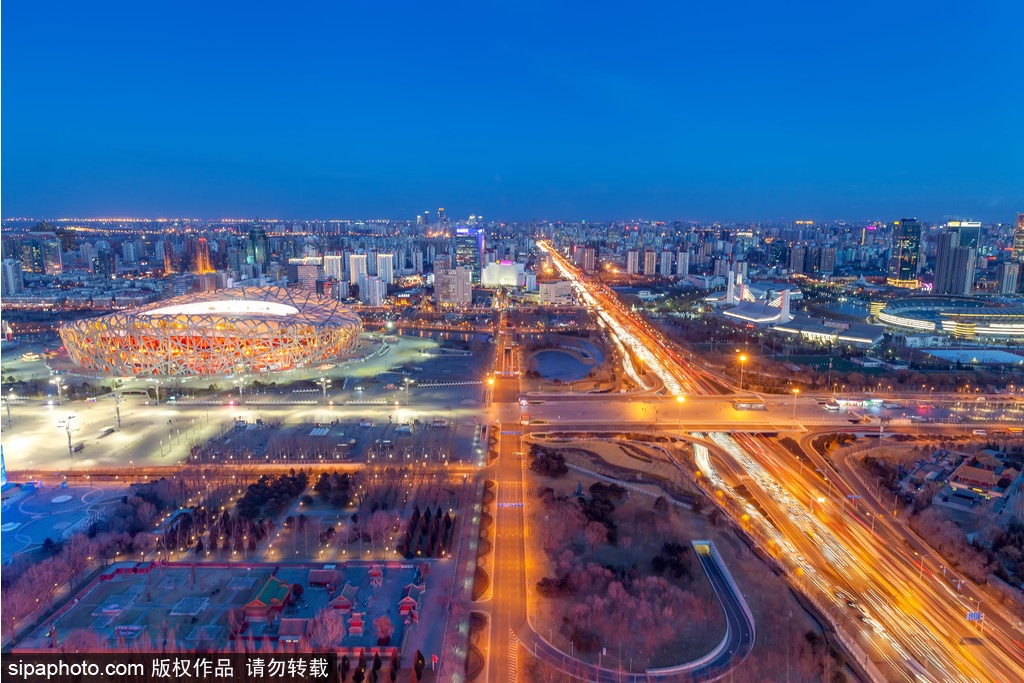Beijing is the epitome of Chinese culture, and the Olympic Park is an extension of the traditional central axis of Beijing. Therefore, the park symbolizes the continuation of China’s several thousand-year history and culture, embodying the three concepts of green, science, and culture. With Olympic venues and various supporting facilities, the Olympic Park incorporates sports competitions, conventions and exhibitions, cultural entertainment, and leisure shopping. Embracing large open space, greenbelts and beautiful environment, the park serves as a public activity center which can provide versatile services. The Olympic Park presents the world a unique cultural landscape, including a dragon-shaped water system, an assortment of sculptures, well-designed floral motifs and lampposts, etc. The sunken garden, at the depth of nine meters underground, combines traditional elements such as ancient Chinese imperial palace gates with modern architecture, creating an artistic conception of space and time of both the ancient and modern.

The Olympic Green, situated at the northern end of the central axis of Beijing City, is an Olympic Park in Chaoyang District. It extends to the southern bank of the Qinghe River in the north, North Tucheng Road in the south, Anli Road and Beichen East Road on the east, and Lincui Road and Beichen West Road on the west. The Olympic Park was the main venue for the Beijing 2008 Olympic and Paralympic Games. It accommodates 44% of the Olympic competition venues and most facilities for the Olympics. The Olympic Park has the largest Olympic venue cluster in history. It covers an area of 11.59 square kilometers and is composed of the Olympic Forest Park in the north, the Olympic venue cluster in the center and the Asian Games venue cluster in the south.



